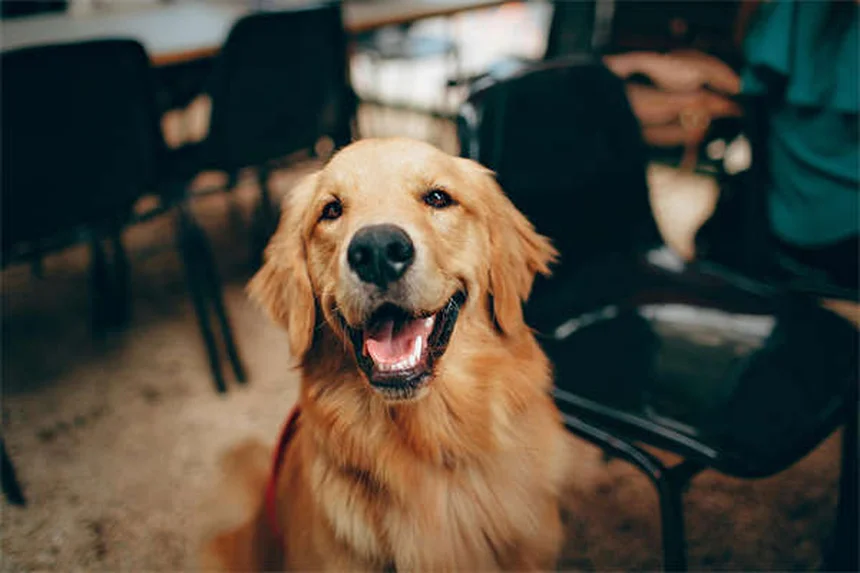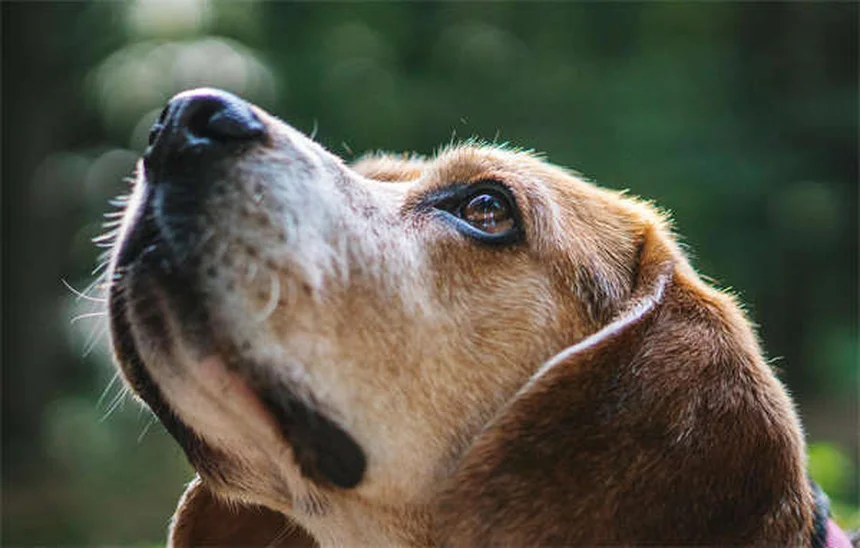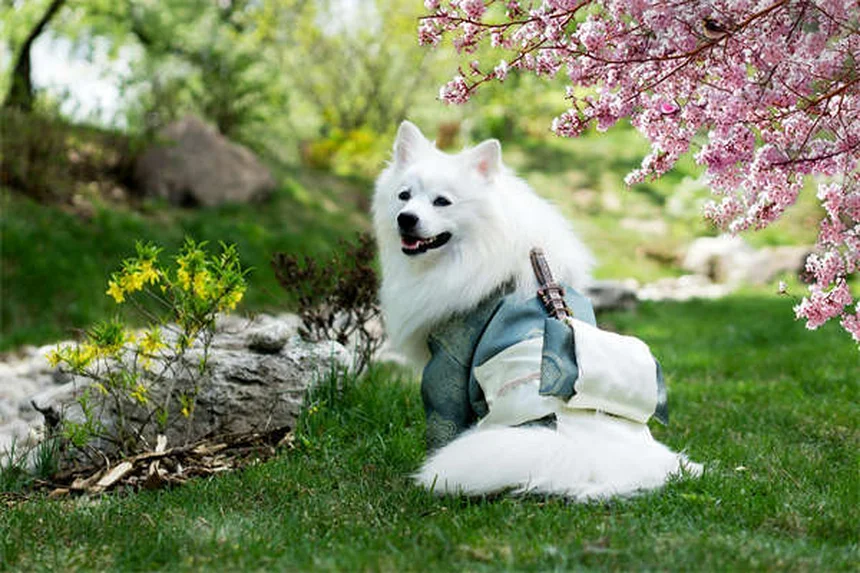Advertisement
How to pick up a puppy or kitten safely? The answer is: You need to use proper technique to protect their fragile bodies and build trust. As someone who's worked with animals for years, I can tell you that most people don't realize how easy it is to accidentally hurt these little guys. The truth is, puppies and kittens aren't stuffed toys - they're delicate creatures who need special care when being handled.Here's what you should know: Improper handling can cause injuries or make your pet afraid of you. But don't worry! We'll show you exactly how to pick them up the right way, what mistakes to avoid, and how to tell if you're doing it wrong. By the end of this guide, you'll be handling your furry friend like a pro!
E.g. :Why Is My Dog Licking Excessively? 5 Common Causes & Solutions
- 1、The Joy of Holding Puppies and Kittens
- 2、The Right Way to Pick Up Your Furry Friend
- 3、Special Considerations for Kids and Pets
- 4、Common Mistakes to Avoid
- 5、Building Trust Through Proper Handling
- 6、Final Thoughts on Safe Handling
- 7、The Science Behind Puppy and Kitten Development
- 8、Beyond Basic Handling - Enrichment Activities
- 9、Health Benefits of Proper Pet Interaction
- 10、Troubleshooting Common Challenges
- 11、Advanced Handling Techniques
- 12、FAQs
The Joy of Holding Puppies and Kittens
Why Proper Handling Matters
Let's be honest - who can resist picking up an adorable puppy or kitten? These little furballs melt our hearts instantly. But here's something you might not realize - improper handling can actually hurt them or make them distrust humans. I've seen too many well-meaning people accidentally scare their pets by picking them up wrong.
Think about it this way - would you want someone to grab you by your arms and swing you around? Probably not! Puppies and kittens feel the same way about being handled roughly. Their tiny bodies are still developing, and we need to be extra careful with them.
Creating Positive Experiences
Pam Johnson-Bennett, a cat behavior expert, makes a great point - how we handle young animals sets the tone for their entire lives. I always tell my friends: "Start gentle handling early, and you'll have a cuddly companion for years!"
Here's what works best in my experience:Short, positive handling sessions where the puppy or kitten feels completely supported. End each session while they're still happy, maybe with a small treat. Before you know it, they'll associate being picked up with love and security!
The Right Way to Pick Up Your Furry Friend
 Photos provided by pixabay
Photos provided by pixabay
Two-Hand Technique for Safety
Dr. Robin Downing shares the gold standard method that I've used successfully for years:
1. Slide one hand between the front legs from the front2. Place your other hand between the rear legs from behind3. Lift smoothly while keeping their spine straight
This technique works because it distributes their weight evenly and prevents any awkward bending. I've found that most animals relax immediately when held this way - their body language tells you everything!
One-Hand Method for Tiny Pets
For really small animals that fit in one hand, try this:
Cup your hand under their chest with fingers toward the head, letting their body fill your palm. It's like holding a precious little football! This supports their widest part and makes them feel secure.
Pro tip from my experience: Always tuck them against your body after lifting. Heights can be scary, and this contact reassures them. I've watched countless puppies stop squirming the moment they feel that warmth and security.
Special Considerations for Kids and Pets
Supervised Interactions Are Key
Should kids pick up puppies or kittens? That's a great question! The answer depends on both the child's age and the animal's temperament.
| Child's Age | Recommended Interaction |
|---|---|
| Under 5 | Pet only while supervised, no picking up |
| 5-8 | Can hold with adult assistance |
| 9+ | May pick up independently if properly trained |
I always remind parents: even the gentlest child can accidentally hurt a tiny animal. That's why I recommend sitting on the floor for all first-time interactions - it's much safer if anyone loses their grip!
 Photos provided by pixabay
Photos provided by pixabay
Two-Hand Technique for Safety
When I teach children how to handle pets, I make it fun with this rhyme:"Front and back, nice and slow,Hold them close, don't let them go!"
The most important lesson? If the animal struggles, put them down gently immediately. This prevents fear and builds trust. I've seen kids become amazing pet handlers when taught these simple rules!
Common Mistakes to Avoid
Dangerous Handling Methods
You wouldn't believe how many people make these mistakes without realizing the risks:
- Never pick up by legs, tail, or collar- Avoid lifting by the armpits (it's uncomfortable)- Don't carry by the scruff (that's for mom cats only!)
Here's why this matters: I once saw a puppy with a dislocated shoulder from being lifted incorrectly. The poor thing was in pain for weeks! Proper handling prevents these painful injuries and keeps your pet trusting you.
Reading Your Pet's Signals
How can you tell if you're doing it wrong? The animal will tell you!
Watch for:- Crying or yelping- Trying to bite or scratch- Stiff body language- Attempting to escape
Remember what Dr. Jeffrey said - some wiggling is normal, but distress signals mean STOP. I always tell my clients: "If you're unsure, put them down and try a different approach."
Building Trust Through Proper Handling
 Photos provided by pixabay
Photos provided by pixabay
Two-Hand Technique for Safety
Here's a secret I've learned: how you pick up your pet affects your entire relationship. Do it right, and you'll have a companion who seeks your affection. Do it wrong, and you might create a pet who hides when you approach.
Try this routine I developed:1. Approach slowly while speaking softly2. Let them sniff your hand first3. Use proper lifting technique4. Hold briefly, then reward with praise or a treat
I've seen this method transform skittish animals into confident, loving pets. It's amazing what consistent, gentle handling can achieve!
When to Seek Professional Help
Some pets need extra help due to past trauma or health issues. If your puppy or kitten consistently reacts fearfully to being handled, consider:
- Consulting a veterinarian (could be pain-related)- Working with a certified animal behaviorist- Trying gradual desensitization techniques
I once worked with a rescue kitten who panicked at being touched. With patience and the right approach, she became the cuddliest cat in her new home! There's always hope for building trust.
Final Thoughts on Safe Handling
Practice Makes Perfect
Like any skill, proper pet handling takes practice. I still remember my first clumsy attempts - but now it's second nature! The key is to go slow, be patient, and always prioritize the animal's comfort.
Why does this matter so much? Because those early experiences shape your pet's personality and your bond for life. I can't count how many strong human-animal relationships I've seen blossom from proper handling techniques!
Sharing the Knowledge
Now that you know these techniques, share them with friends and family. I make a point to gently correct handling mistakes when I see them - it's an opportunity to prevent future problems.
Remember what we've covered:- Use proper two-hand or one-hand techniques- Always support the body fully- Watch for distress signals- Make every interaction positive
Follow these guidelines, and you'll be giving your puppy or kitten the best possible start in life. Happy cuddling!
The Science Behind Puppy and Kitten Development
Understanding Their Physical Growth
Did you know puppies and kittens grow at an astonishing rate? Their bones and joints are incredibly delicate during the first few months. I always remind my friends that these little guys are basically made of cartilage at first - that's why proper support matters so much.
Here's something fascinating I learned from a veterinarian friend: A kitten's skeleton isn't fully formed until about 6 months old. Puppies take even longer - some large breeds continue developing until 18 months! That's why we need to be extra careful when handling them. Their growth plates are still soft, and rough handling could cause permanent damage.
The Emotional Development Timeline
You might wonder - how early do these little furballs start forming emotional connections? Much earlier than you'd think! Research shows that positive human interactions in the first 16 weeks shape their personalities for life.
I've observed this firsthand with my neighbor's litter of golden retrievers. The puppies who received gentle, consistent handling from week 8 became the most confident and friendly dogs. Meanwhile, the ones who got less attention tended to be more skittish. Early experiences literally shape their brains - isn't that amazing?
Beyond Basic Handling - Enrichment Activities
Safe Playtime Ideas
Once you've mastered proper holding techniques, let's talk about play! Interactive play builds trust and burns energy. My personal favorite is the "towel game" - gently rolling a kitten in a soft towel while giving belly rubs.
For puppies, try this fun exercise:1. Sit on the floor with your legs in a circle2. Let the puppy crawl through your "tunnel"3. Reward with treats and praise
I've found that these activities help young animals associate humans with fun while keeping them safe. Plus, they're absolutely adorable to watch! Just remember to keep sessions short - about 5 minutes for kittens, 10 for puppies.
Socialization Beyond Handling
Proper socialization involves more than just picking them up correctly. Exposure to different sounds, surfaces, and gentle touches prepares them for life. Here's what I recommend:
- Introduce them to soft brushes early (great for bonding!)- Let them walk on different textures (towels, carpet, wood)- Play recordings of household sounds at low volume
My cousin's kitten used to panic at vacuum noises until we tried gradual exposure. Now? She sleeps through cleaning time like it's nothing! Small steps make big differences in their confidence.
Health Benefits of Proper Pet Interaction
For the Animals
We've talked about preventing injuries, but did you know proper handling actually boosts their health? Gentle touch stimulates circulation and digestion. I've noticed that well-handled pets tend to have better appetites and more regular bathroom habits.
A study at Colorado State University found that puppies receiving daily gentle massage gained weight faster and showed lower stress hormones. That's why I always suggest incorporating light petting into handling sessions. Think of it as a mini spa treatment for your furry friend!
For Humans
Here's the best part - interacting with pets properly benefits us too! When we hold puppies and kittens correctly, our bodies release oxytocin - the "love hormone." I can personally attest to the instant mood boost from a proper kitten cuddle session.
Check out these documented benefits:- Lower blood pressure- Reduced anxiety- Increased feelings of connection- Improved immune function
Isn't it wonderful how taking care of our pets also takes care of us? That's why I make time for daily quality interactions with my animals - it's literally good medicine!
Troubleshooting Common Challenges
When Your Pet Doesn't Like Being Held
What if you're doing everything right but your puppy or kitten still resists? Don't take it personally - some animals are naturally more independent. I've worked with many cats who prefer sitting beside people rather than on them.
Try these alternatives:- Offer lap time instead of lifting- Use treats to create positive associations- Respect their boundaries and try again later
Remember my friend's Persian cat, Mr. Whiskers? He hated being picked up until we discovered he loved shoulder rides! Sometimes it's about finding their preferred contact method.
Dealing With Overexcited Pets
On the flip side, some puppies get so excited they can't sit still! I've had my share of scratches from overenthusiastic kittens. Here's what works:
1. Wait for a calm moment before attempting to pick up2. Use a calm, quiet voice3. Support their body fully to prevent squirming4. Keep initial sessions very short
My golden rule? Never punish them for natural energy - redirect it instead. A quick play session before handling often does wonders for settling them down.
Advanced Handling Techniques
For Veterinary Visits
Let's face it - nobody likes going to the vet. But proper handling can make these trips less stressful. Start practicing "vet-style" holds at home so they're familiar when needed.
Try these positions:- Cradling on their back (for belly exams)- Gentle scruff hold (cats only, for quick procedures)- Standing restraint (for weighing and exams)
I always tell my clients: "If you can make handling positive at home, vet visits become much easier." My own cat used to hide when she saw the carrier - now she walks right in thanks to positive association training!
For Grooming and Care
Proper handling extends to nail trims, ear cleaning, and other care routines. The secret is gradual introduction and lots of rewards. Here's my step-by-step approach:
Week 1: Just touch paws briefly, then treatWeek 2: Hold paw for 5 seconds, then treatWeek 3: Introduce clippers without cuttingWeek 4: Attempt one nail, then lavish praise
This slow method has transformed grooming from a battle to bonding time for countless pets I've worked with. Patience truly pays off when building these important life skills!
E.g. :HOW TO Pick-up and Hold a Puppy and AVOID Hurting Them ...
FAQs
Q: What's the safest way to pick up a puppy or kitten?
A: The safest method is the two-hand technique recommended by veterinarians. Here's how I do it: First, slide one hand between the front legs from the front, then place your other hand between the rear legs from behind. Lift smoothly while keeping their spine straight. This distributes their weight evenly and prevents injury. For tiny pets that fit in one hand, cup your hand under their chest with fingers toward the head - like holding a precious little football! Always remember to tuck them against your body after lifting. I've found this method works wonders for making animals feel secure.
Q: Can children pick up puppies or kittens?
A: This depends on the child's age and the animal's size. From my experience, kids under 5 should only pet animals while supervised, with no picking up. Children 5-8 can hold pets with adult assistance, while kids 9+ may pick up independently if properly trained. I always recommend having kids sit on the floor first - that way, if the animal wiggles free, the fall is much shorter. Teaching kids proper technique is crucial, and I've had great success with simple rhymes like "Front and back, nice and slow, Hold them close, don't let them go!"
Q: What are the most common mistakes when picking up pets?
A: The biggest mistakes I see are picking up by legs, tail, or collar - these can cause serious injuries like dislocated limbs. Another no-no is carrying by the scruff (that's for mom cats only!). Many people also lift too quickly, which can startle the animal. From my work at the animal shelter, I've seen how these mistakes can lead to trust issues. The golden rule? If you wouldn't want to be picked up that way, don't do it to your pet!
Q: How can I tell if I'm holding my pet wrong?
A: Your pet will tell you! Watch for these signs: crying/yelping, trying to bite or scratch, stiff body language, or frantic attempts to escape. Some wiggling is normal, but distress signals mean STOP immediately. I always tell my clients: "When in doubt, put them down gently and try a different approach." Remember, each animal has preferences - my own cat prefers being held like a baby, while my dog likes facing forward. It's all about reading their body language.
Q: Why is proper handling technique so important?
A: Here's the truth: how you handle your pet affects your entire relationship. From my 10 years of experience, I've seen that proper handling builds trust and creates a confident, affectionate companion. Poor handling can lead to fear, aggression, or even injuries. The good news? It's never too late to improve! Start with short, positive sessions using the right technique, and you'll be amazed at the difference. I've watched countless shy animals transform into cuddle bugs with consistent, gentle handling.

















